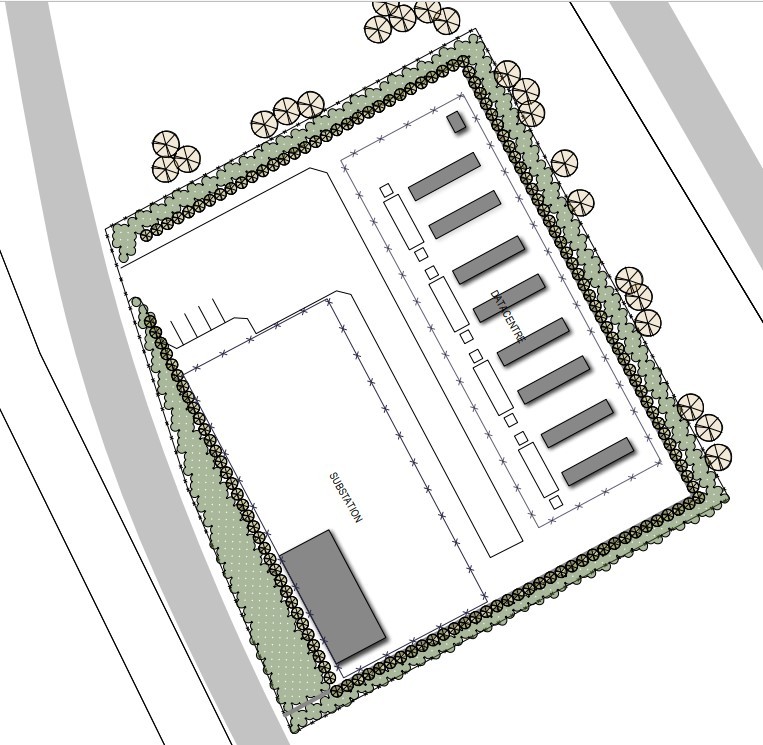More data centres likely in our landscape
Jill Herron
18 February 2022, 5:00 PM
 The site of a proposed data centre near Clyde.
The site of a proposed data centre near Clyde.Data centres such as that proposed for a site by the Clyde dam are likely to become “a feature of our landscape” in New Zealand, Contact Energy’s Central Otago-based head of hydro generation Boyd Brinsdon said, yesterday.
Several overseas operators are interested in developing data centres in New Zealand at present and although Contact is keen for more here in Central Otago, none are currently being worked on, a company spokesperson confirmed.
A hearing for Contact Energy’s proposal to build the energy-hungry computer processing unit on behalf of UK-based company Lake Parime, began yesterday.
The application is to subdivide a plot of land just downstream from the Clyde Dam, on the opposite side of the Mata-au, Clutha River from Clyde township, and gain resource consent to construct the unit.
The data centre – effectively eight containers each home to 368 computer servers – would be built by Contact, but owned by Lake Parime.
It would require 10 megawatts of power from the Clyde Dam, which can generate 464 megawatts at peak operation.
Brinsdon said Contact could sell power to Lake Parime during times of surplus but when river and lake levels were low and supply under demand, they could request the centre reduce use.
He said New Zealand was attractive to these types of overseas companies and they provided electricity retailers much-needed off-peak demand for power.
Contact Energy spokeswoman Leah Chamberlin-Gunn told The Central App earlier this week that Lake Parime was currently looking at other sites in New Zealand to build more data centres, but Contact had nothing more planned at the moment in Central Otago.
“At this stage, we have no concrete plans for further data centres in the area.
"Although this is a space we see bringing further opportunities to the area.
"We know there is a large global industry in data centres and we are excited about what it could bring to Central Otago.”
New Zealand’s inability to store its abundance of renewable electricity and ensure a steady year- round supply has to be managed.
Data centres provide something of an ideal side-hussle allowing power retailers to make money when demand was low in New Zealand, without being committed to using precious energy in low-supply times.
“Contact is both a generator and a retailer, so we both make and sell energy.
"The data centre is part of our plan to grow industrial demand for electricity.
"This is part of our strategy to reduce New Zealand’s reliance on the Tiwai smelter and to ensure the abundance of renewable generation is
used productively rather than it being trapped in the lower South Island and wasted in the form of spilled water.”
She said Contact’s motivation was to build industrial demand for renewable electricity and data centres were an excellent potential source of this.
“Arrangements with data centres are essentially generating economic benefits for New Zealand by exporting renewable electricity that would not otherwise be used here.
"We are aware of several credible data centre operators being interested in building data centres in New Zealand over the next few years and are keen to help by providing a source of renewable energy.”
She conceded that Contact spilling water that could have been used to make power did not make a difference to people’s household power bills, but said having a chance to sell that surplus allowed Contact financial benefit to be able to invest in more renewable energy projects.
The Clyde data centre would likely provide two fulltime jobs once operational.
A substation would also be built by Aurora Energy Ltd on the site, if that company’s related application is successful.
This would connect the centre onto the local grid and give a welcome boost to local power supply reliability.

A landscape plan of the data centre showing eight shipping-container-like units and a substation. Source: Contact Energy Ltd
The 2944 servers, which are computer hardware or software programmes providing functionality to computers elsewhere, are cooled by fans.
These make constant humming noises which was of concern to the three submitters who oppose the development.
When the centre plans were first made public, some residents were worried about its visual and noise effects and the Central Otago District Council noted this wider worry in its report to yesterday’s hearing.
Seventeen neighbours and groups were invited to have input to the formal planning process.
The application was ‘limited notified’ rather than being ‘publicly notified’ as council were not required by law to do the latter.
Only three of the 17 parties invited to submit took up the opportunity, all three opposing over noise and related concerns.
Hearings commissioner Bob Nixon yesterday heard some evidence then adjourned the hearing for ten days.
Once all parties had been heard and possible conditions of consents reviewed, a decision would be released within the required 15-day period.

